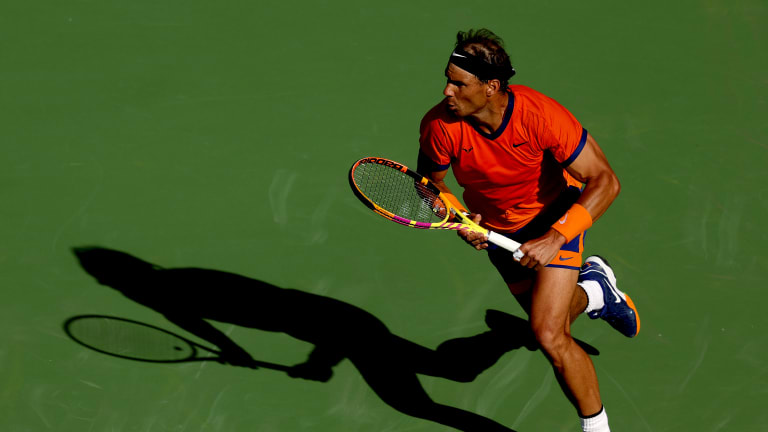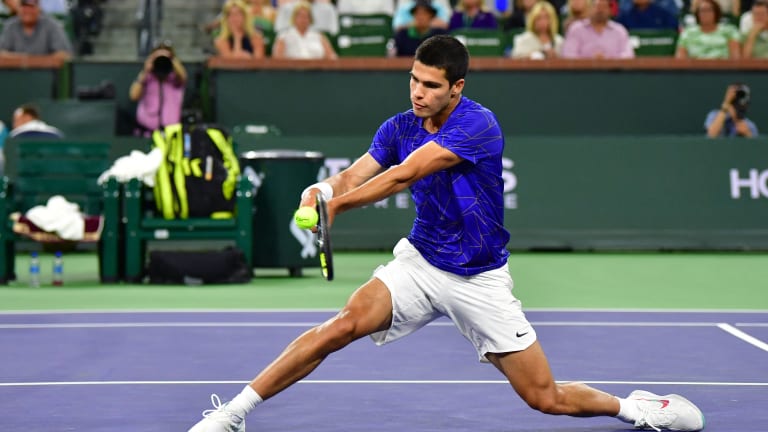Over and over, Cam Norrie hit shots that looked like they were going to be winners. Over and over, I kept thinking, as the ball hung in the air and neared its second bounce, ‘There’s no way Alcaraz can run all the way across the court and get there in time.’ Over and over, Alcaraz kept running all the way across the court and getting just in time.
As the 18-year-old continued to defy time and physics and gravity and the limits of human speed against Norrie on Thursday night, I kept thinking about another time and place, and another 18-year-old player. The time was 2005, the place was Roland Garros, and the player, of course, was Rafael Nadal. Watching Rafa in his debut French Open, I can remember thinking, as an opponent’s shot hung in the air 20 feet away from him, ‘There’s no way he can run all the way across the court and get there in time,’ only to watch Rafa get on his horse and do exactly that.
It wasn’t that Nadal at 18 was the fastest player on tour. It’s just that I’d never seen anyone even try to make those types of gets before. The same goes with Alcaraz at 18: There’s no shot right now that he doesn’t believe he can track down, and most of the time he’s right. The torch of exuberant willfulness looks like it’s about to be passed from one Spaniard to another.
“I think he’s unstoppable in terms of his career,” the 35-year-old Nadal said on Thursday. “He has the passion. He’s humble enough to work hard. He reminds me of things when I was a 17- or 18-year-old kid.”



